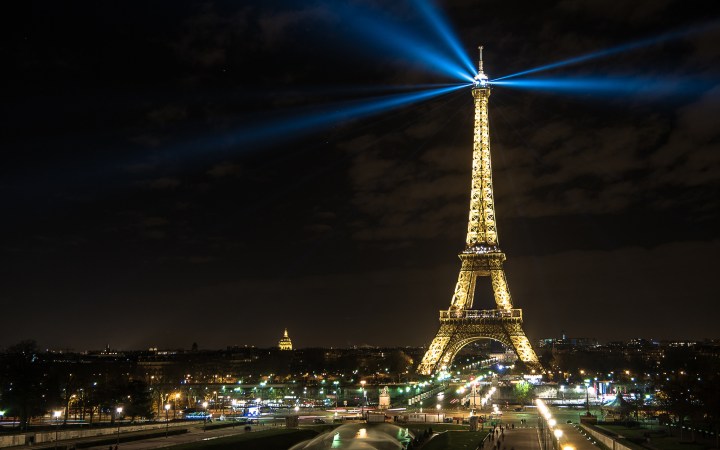

Over the the next two weeks, the news will be especially environment-focused one as global leaders get together in Glasgow, Scotland, to discuss net-zero goals, carbon markets, and green investments.
Welcome to COP 26—arguably one of the most important climate conferences in the history of the world taking place, where the next decade of crucial climate action will be mapped out.
“The climate crisis is already causing loss and damage for so many people; and while we may all be in the same storm, we are definitely not all in the same boat,” Elizabeth Wathuti, the Global South Co-Chair of the COP26 Civil Society and Youth Advisory Council, said in a UN release. “COP26 is an opportunity and a time to move from commitments to real urgent action.”
What is COP 26?
The COP summits, or “Conference of the Parties” of the UN Framework Convention on Climate Change, began back in 1994 at the beginning of enforcement of the UN Framework Convention on Climate Change. This treaty, according to the UN, brought 197 signatories together in agreement to “stabilize greenhouse gas concentrations in the atmosphere.” Each year a different location holds a COP, with the exception of 2020 because of COVID-19 shutdowns.
Throughout the years, there have been particularly important COP events, notably the Kyoto Protocol back in 1997 that set limits on emissions for developed nations by 2012 and the Paris Agreement in 2015 which set the major, and elusive, goal of keeping global warming below 1.5 degrees Celsius, thus avoiding some of the most detrimental effects of climate change.
This COP marks another especially important one, as it’s time for the nearly 200 signatories to get to work and resubmit NDCs, or Nationally Determined Contributions, to actually reach the goal of keeping warming below 1.5 degrees (something large emitters are woefully off track for). Right now, with current goals, the planet could be looking 2.7 degrees hotter by the end of the century—making for a 62 percent increase in wildfire-affected zones in the Northern Hemisphere, severe habitat loss, and more frequent and lengthy droughts, according to the UN. The 1.5-degree warming scenario isn’t all peachy either—but unlike worse scenarios, it would be at least livable.
What are the main goals for COP 26?
To reach these goals, there are four main talking points that will be central to the conference, according to the UN and the host, the UK government.
1. Reach net-zero by mid-century and make 1.5 degrees a possibility
A major goal for big emitters is to slim down on greenhouse gas emissions, notably carbon and methane. But net-zero, or sometimes called “carbon neutrality,” doesn’t mean switching to a completely zero-emissions world—it simply means a country isn’t putting out more carbon than its sequestering, capturing, or otherwise storing. And some experts aren’t 100 percent sold on it.
“On the road to COP26, corporations are using ‘net-zero’ to block effective climate policy and greenwash their image while maintaining business-as-usual,” authors of a recent report released by the nonprofit group Corporate Accountability wrote.
This can be controversial for a number of reasons. Namely, it’s difficult to minimize carbon emissions from industries, say flying and shipping.y. Additionally, some of the big names who have committed to net-zero goals by 2050, including the US, would need to halve emissions by 2030 to get there.
[Related: The Biden administration is going pedal-to-the-metal on electric cars]
Still, this goal can push important sustainable infrastructure changes, like decommissioning coal plants, switching to a green economy, and boosting electric vehicles and other clean technologies.
2. Protect nature and human populations
Beyond just energy and economics, nature is a big part of COP26. “As there is no pathway to net-zero without protecting and restoring nature, we are encouraging countries to include nature-based solutions in their climate plans,” reads the UK Government and UN COP26 website. Currently, only three percent of investments going towards global climate goals ends up supporting nature-based solutions, with a mere one percent going towards adaptation.
“Climate change is becoming an increasingly serious driver of biodiversity loss and ecosystem degradation—and that loss threatens to worsen climate change,” Elizabeth Maruma Mrema, executive secretary of the U.N. Convention on Biological Diversity, told the Thomson Reuters Foundation earlier this week. A two-part Biodiversity COP15 event took place earlier this month in Kunming, China, and will finish up in spring 2022. During those meetings, also known as the Kunming Declaration, the US and 99 other countries signed onto a “30 by 30” target to protect 30 percent of their country’s natural landscapes by 2030.
“The world is waking up to the fact that the nature crisis is as serious as the climate crisis, but unfortunately this is not happening fast enough,” said Lin Li, Director of Global Policy and Advocacy at WWF International, in a press release. “Biodiversity loss is threatening human health and livelihoods, and increasing the risk of the next pandemic, yet leaders’ pledges are yet to be translated into ambition in the negotiation room. Now is the time to step up.”
3. Put more capital into climate initiatives
Developed nations also must fund more mitigation and strategies for developing countries—as stated back in 2009, when rich nations first promised to deliver $100 billion a year to developing countries for five years starting in 2020. Now, the current plan prepared by Canada and Germany may push the window back to 2023, according to Reuters. But the amount of investment might be too low as well—at the beginning of October Reuters reported that African leaders are saying the necessary cost of climate mitigation and adaptation may be over $1 trillion.
[Related: Sci-fi carbon coins could actually save our planet]
“The point we are trying to make is that we need a climate finance figure that is ambitious, that is based on science and based on needs,” Zaheer Fakir, a lead coordinator for finance for the African Group of Negotiators on Climate Change, told Reuters.
4. Work together to complete the Paris rule book
The final goal aims to make the Paris Agreement fully operational by wrapping up the rule book, in addition to making more commitments and collaborations to keep pushing for and delivering climate action. Namely, the leaders at COP26 are focusing on the specs of international carbon trading, or Article 6 of the Paris Agreement, according to PBS. There was a similar attempt back at COP25 in Madrid that failed.
Since the US rejoined the Paris Agreement earlier this year, environmental advocates and experts have been hopeful that the Paris signatories can finally come to a consensus. What’s more, voluntary carbon markets have taken off across the globe, according to an Ecosystems Marketplace report, and are on track to break an annual market value of $1 billion for 2021.
“Depending on how the rules are structured, Article 6 could help the world avoid dangerous levels of global warming … or let countries off the hook from making meaningful emissions cuts,” Yamide Dagnet, director of climate negotiations at the World Resources Institute, told Reuters.
What now?
The talks started October 31 and will go until November 12. Attendees include leaders of over 120 nations, including President Joe Biden and UK Prime Minister Boris Johnson, activists and celebrities like Greta Thunberg and Vanessa Nakate, and more than 30,000 other representatives of governments, businesses, and NGOs. They’ve also already set the date for COP27: November 7, 2022, in an unknown location.















